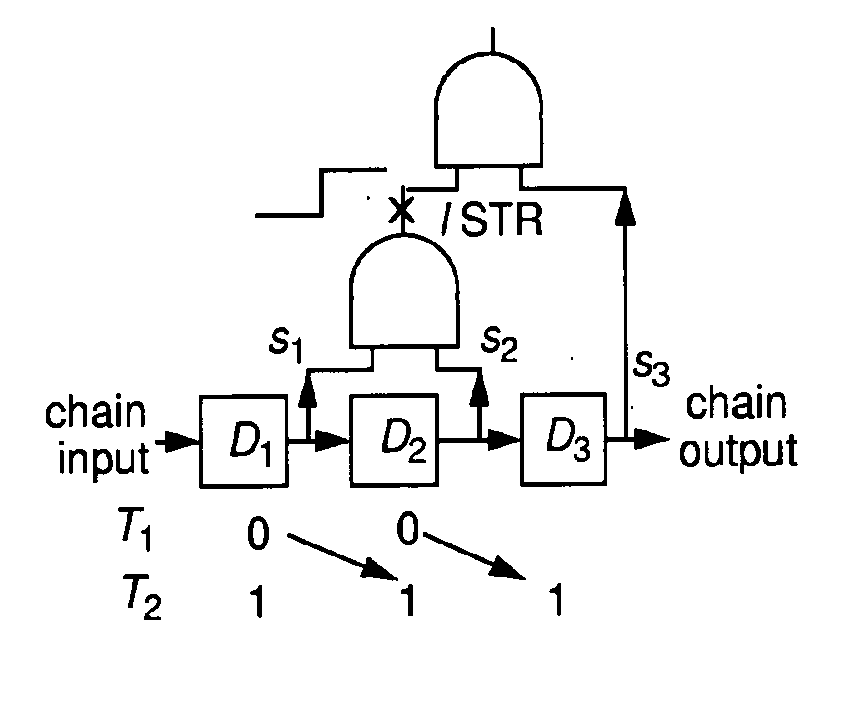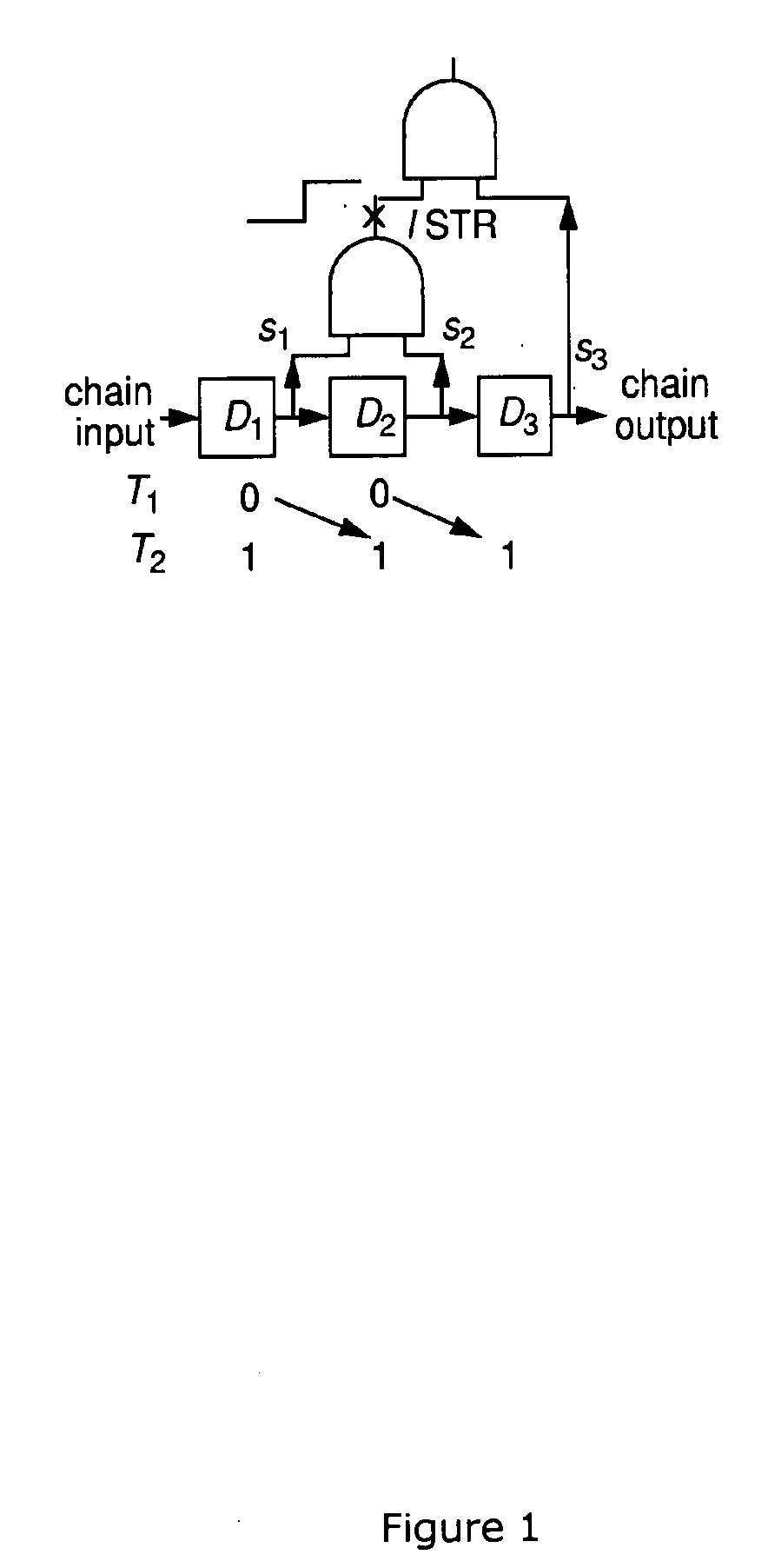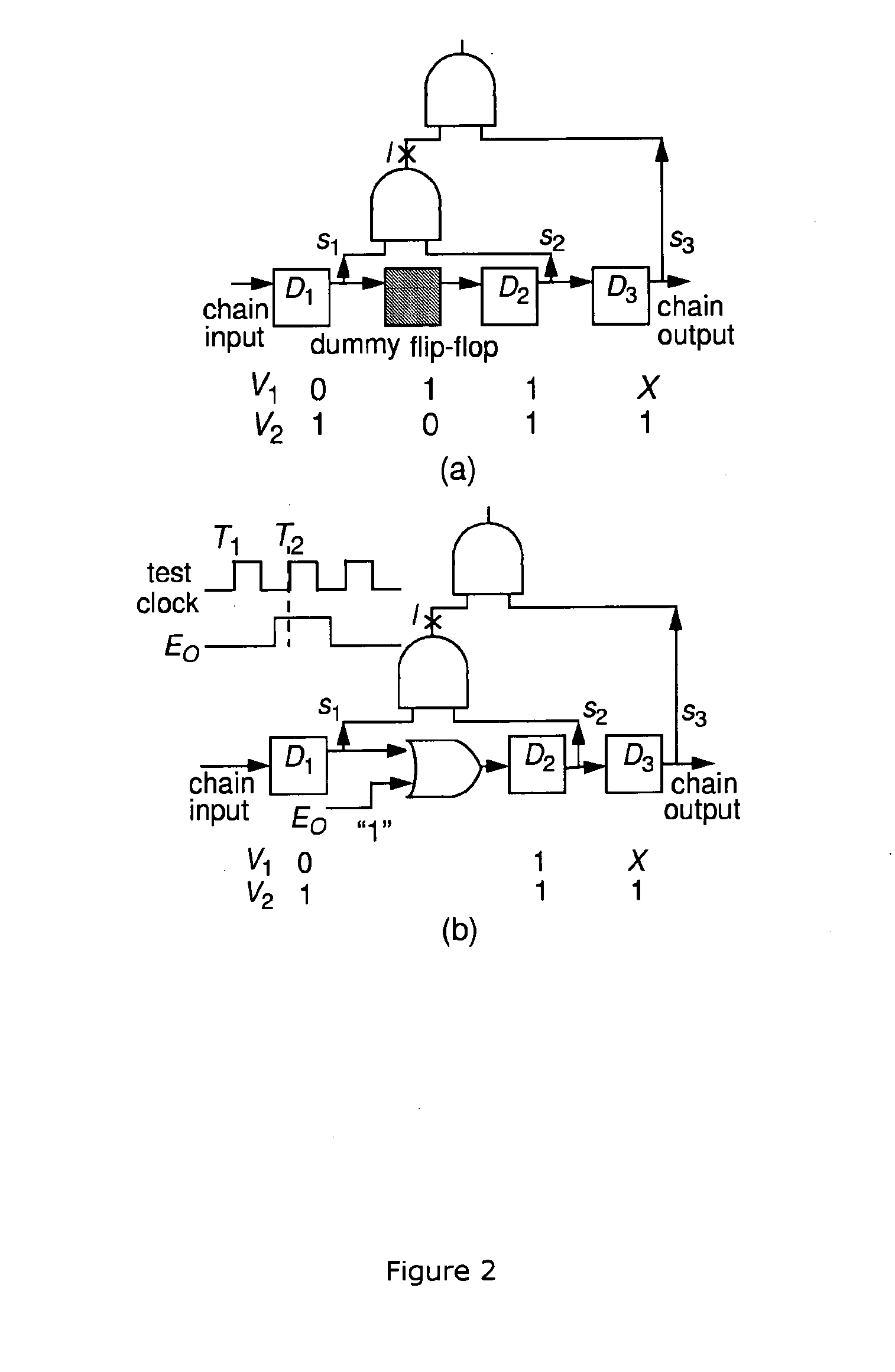Scalable scan-path test point insertion technique
- Summary
- Abstract
- Description
- Claims
- Application Information
AI Technical Summary
Benefits of technology
Problems solved by technology
Method used
Image
Examples
example
[0124] FIG. 5 illustrates calculating test point vectors for two example sets of test cube pairs: C.sup.1 and C.sup.2. Assume that adjacent pairs of state inputs, s.sub.2 and s.sub.3, s.sub.4 and s.sub.5, and s.sub.5 and s.sub.6, drive different fanout cones. Therefore, tp.sup.k.sub.3, tp.sup.k.sub.5, and tp.sup.k.sub.6, where k=1,2, are always assigned W's in every test point vector. When test cube pair V.sup.1 is added to C.sup.1, tp.sup.1.sub.2 is updated to O since s.sub.1 is assigned a 0 in V.sup.1.sub.1 and s.sub.2 is assigned a 1 in V.sup.1.sub.2, i.e., d.sup.1.sub.2=01, and tp.sup.1.sub.4 and tp.sup.1.sub.7 are updated to W0 since d.sup.1.sub.4=d.sup.1.sub.7=X0 in V.sup.1. When test cube pair V.sup.2 is added to C.sup.1, tp.sup.1.sub.4 is updated to A since d.sup.2.sub.4=10. On the other hand, tp.sup.1.sub.7 holds the previous value W0 since d.sup.2.sub.7=00. Assume that no test cube pair can be added to C.sup.1 without conflict after V.sup.2 is added. Now, all intermediate ...
PUM
 Login to View More
Login to View More Abstract
Description
Claims
Application Information
 Login to View More
Login to View More - R&D
- Intellectual Property
- Life Sciences
- Materials
- Tech Scout
- Unparalleled Data Quality
- Higher Quality Content
- 60% Fewer Hallucinations
Browse by: Latest US Patents, China's latest patents, Technical Efficacy Thesaurus, Application Domain, Technology Topic, Popular Technical Reports.
© 2025 PatSnap. All rights reserved.Legal|Privacy policy|Modern Slavery Act Transparency Statement|Sitemap|About US| Contact US: help@patsnap.com



